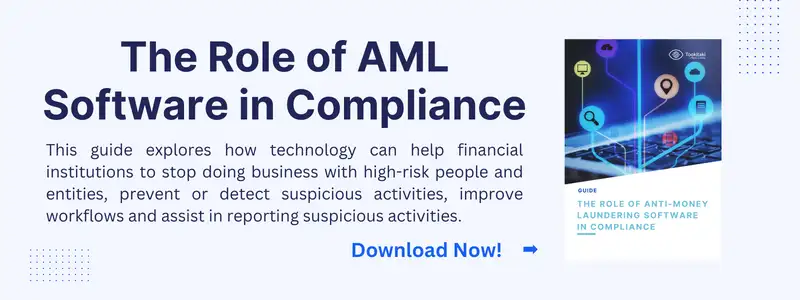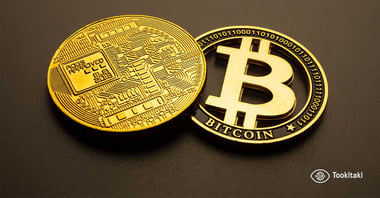Prepaid debit cards have emerged as a dominant financial tool, providing users with unparalleled convenience and flexibility. According to a report from PayNXT360, the global prepaid card market is poised to grow at a compound annual growth rate (CAGR) of 10.3% between 2022 to 2027, to reach $2.5 trillion by 2027. While these cards offer seamless transactions and financial autonomy, concerns regarding prepaid card fraud are also growing globally.
This article explores the relationship between prepaid debit cards and money laundering, the reasons behind their appeal to criminals, the red flags for Anti-Money Laundering (AML) measures, and the balance required to ensure both convenience and security in the evolving landscape of modern finance.
Understanding Prepaid Cards
Prepaid debit cards have gained popularity as a user-friendly financial instrument, offering individuals a convenient and flexible alternative to traditional banking. These cards operate by allowing users to load a specific amount of money onto the card in advance. Much like a traditional debit card, individuals can then use the prepaid card for a variety of transactions, ranging from online purchases to in-store shopping and ATM withdrawals. The loading process is typically straightforward, involving fund transfers from a bank account, direct deposit, or the purchase of a prepaid card with a predetermined value.
One notable distinction is that prepaid cards are not directly linked to a traditional bank account. This characteristic grant user a degree of financial autonomy without the necessity of establishing a formal banking relationship. The simplicity and accessibility of prepaid cards make them an attractive option for those seeking a more flexible approach to managing their finances. However, it is precisely these features that raise prepaid debit cards money laundering concerns.
Relationship Between Prepaid Cards and Money Laundering
Criminals seeking to launder money are attracted to prepaid cards due to the ease with which they can obscure the origins of illicitly obtained funds. The lack of stringent identity checks during the acquisition of prepaid cards enables individuals to maintain a level of anonymity, making it more difficult for law enforcement agencies to connect transactions to specific individuals. This anonymity extends to cross-border transactions, as prepaid cards facilitate international money transfers without the same level of scrutiny as traditional banking methods.
Furthermore, the simplicity of loading and unloading funds onto prepaid cards contributes to their appeal in money laundering schemes. Criminals can easily manipulate prepaid card schemes to move funds across various accounts, making it challenging for authorities to track the flow of money. The absence of a direct link to a traditional bank account also allows perpetrators to distance themselves from the financial system, adding an additional layer of complexity to investigations.
As financial institutions and regulatory bodies grapple with the rising prepaid debit cards money laundering activities, addressing the vulnerabilities associated becomes paramount. Implementing robust Anti-Money Laundering (AML) measures and enhancing identity verification processes for acquiring prepaid cards are crucial steps in mitigating the risks associated with their potential misuse.
Read More: Prepaid Debit Cards and Their Role in Financial Crimes
Why Do Money Launderers Use Prepaid Cards?
Prepaid debit cards money laundering activities are gaining momentum for several reasons globally. Here are a few of those.
1. Anonymity:
Prepaid cards offer a level of anonymity that is particularly appealing to money launderers. Unlike traditional payment cards, the acquisition of prepaid cards often involves less stringent customer due diligence (CDD) identification and verification measures. This lack of rigorous scrutiny allows individuals engaged in illegal activities to obtain prepaid cards without revealing their true identities, creating a veil that complicates the tracking of the source of funds.
2. Global Reach:
The open nature of many prepaid cards allows for seamless integration into global payment networks. Money launderers leverage this feature to their advantage, using prepaid cards to move funds across borders without attracting undue attention. By facilitating funding in one country and enabling cash withdrawals in another, these cards become a versatile tool for criminals seeking to exploit the complexities of international financial transactions.
3. Portability:
Prepaid cards, with their physical resemblance to regular credit cards, provide money launderers with a discreet and portable means of transporting funds. This feature is particularly attractive as an alternative to carrying large volumes of cash, reducing the risk of detection in various environments. The inconspicuous nature of prepaid cards enhances their appeal for those looking to move illicit funds discreetly.
4. Funding Methods:
Money launderers appreciate the flexibility in loading funds onto prepaid cards and the ability to obscure the origin of these funds. They exploit various services, including phone and online mediums, to load funds onto open prepaid cards. This diversity in funding methods makes it challenging for authorities to trace and scrutinize the flow of funds, contributing to the appeal of prepaid cards in money laundering schemes.
5. Service Complexity:
The prepaid card industry involves a complex network of service providers, including program managers, issuers, acquirers, payment networks, distributors, and vendors. This complexity adds a layer of administrative challenge to Anti-Money Laundering (AML) transaction monitoring. Money launderers take advantage of the numerous entities involved, operating within a landscape where oversight is complex, and the risk of detection is consequently reduced.
AML Red Flag and Prepaid Cards
1. Large and Frequent Transactions:
Unusually large or frequent transactions involving prepaid cards can raise suspicion. Money launderers may attempt to move significant amounts of funds through prepaid cards to obfuscate the source of the money. AML systems are designed to detect patterns of transactions that deviate from the norm and trigger further investigation.
2. Cross-Border Transactions:
Prepaid cards' global reach enables cross-border transactions, making them attractive to money launderers seeking to move funds discreetly between different jurisdictions. Transactions that involve loading funds in one country and withdrawing cash in another may signal potential money laundering activity.
3. Rapid Reloads and Unexplained Activity:
Patterns of rapidly reloading large sums of money onto prepaid cards, especially without a clear explanation for the source or purpose, can be indicative of money laundering. Criminals may use prepaid cards to cycle funds quickly, making it challenging for authorities to track the flow of illicit funds.
4. Multiple Reload Methods:
Diversity in funding methods for loading funds onto prepaid cards can be a red flag. Money launderers exploit various channels, including online platforms, phone services, or in-person methods, to load funds onto prepaid cards. This complexity can complicate AML efforts, as it adds layers of opacity to the transaction history.
5. Structuring Transactions:
Money launderers may engage in structuring, also known as smurfing, which involves breaking down large transactions into smaller, less conspicuous amounts. This tactic aims to avoid triggering AML detection thresholds. Prepaid cards can be used in structuring schemes, making it crucial for AML systems to identify and investigate such fragmented transactions.
Conclusion
The convenience of prepaid debit cards comes hand in hand with the potential for misuse in money laundering. As these cards continue to play a significant role in the financial landscape, regulatory bodies and financial institutions must maintain a proactive approach. Robust AML measures are imperative to detect and prevent prepaid debit cards money laundering activities, striking a balance between preserving the convenience of prepaid cards for legitimate users and safeguarding against their exploitation for criminal purposes.
Frequently Asked Questions (FAQs)
Are prepaid debit cards traceable?
Yes, prepaid debit cards are traceable. However, the level of traceability depends on the issuer and the information provided during the card registration process.
Can you get scammed with a prepaid card?
Yes, individuals can fall victim to scams involving prepaid cards. Scammers may employ tactics to trick users into sharing card details, thereby gaining access to the funds loaded onto the card.
How can I protect myself from prepaid card scams?
To protect yourself from prepaid card scams, be cautious when sharing card details and personal information. Only use trusted and secure platforms for loading funds onto prepaid cards.
Anti-Financial Crime Compliance with Tookitaki?




